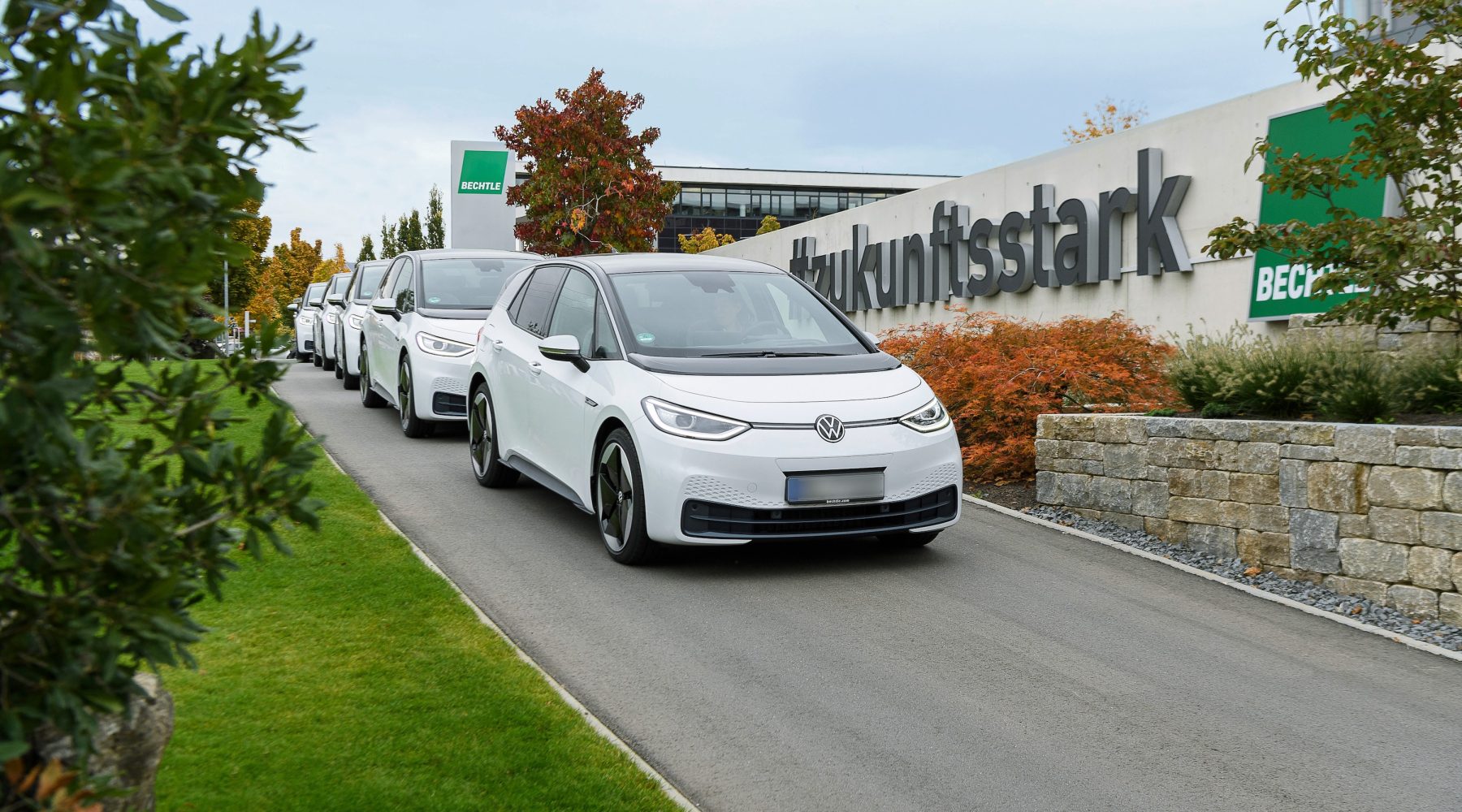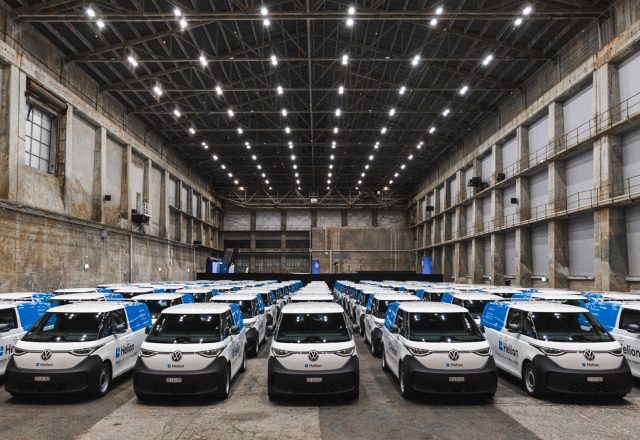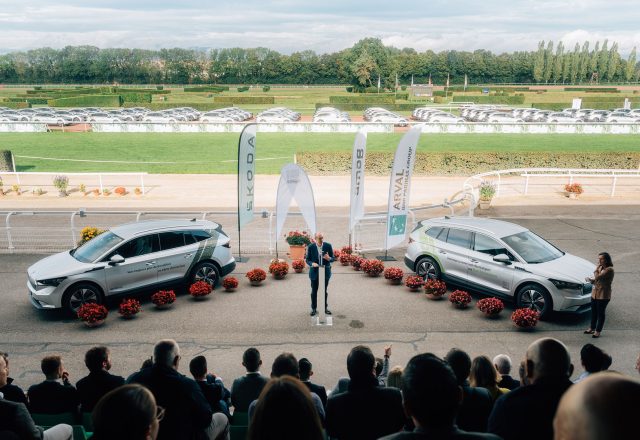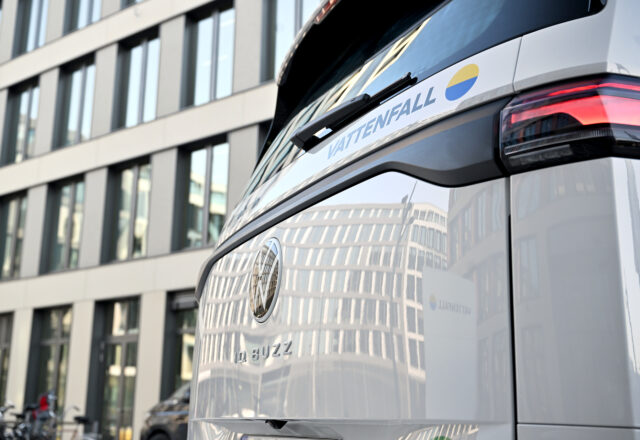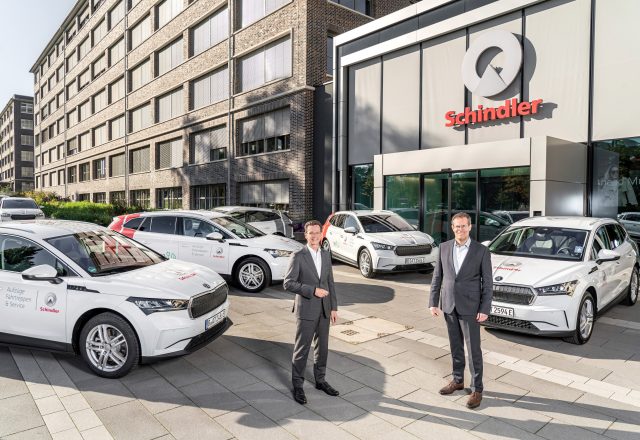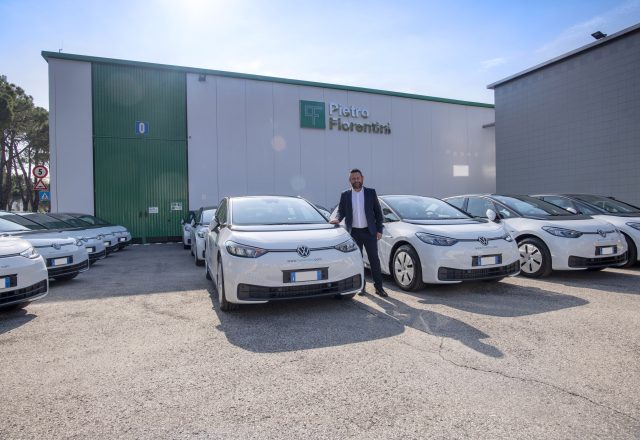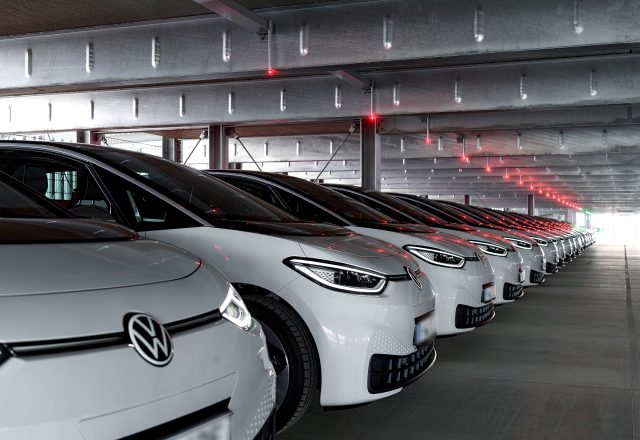Lined up neatly in a row – and already presenting a strong image: 50 new Volkswagen ID.3 cars in front of Bechtle AG headquarters in Neckarsulm. But this was no last-minute drive as 2020 came to a close, just far-sighted planning. The largest German IT system house with around 80 locations in the DACH (German speaking) region is a pioneer in the field of electric mobility – including having its own green power production and charging infrastructure. Uli Drautz, Head of Corporate Controlling, provides an insight into Bechtle’s motivations.
Mr Drautz, as Head of Corporate Controlling, would it not be unusual to be involved with fleet matters?
Uli Drautz: On the one hand, this additional responsibility has grown historically – but on the other hand, it makes perfect sense. We see controlling as supporting our business activities. The composition of an attractive, sustainable and economic fleet fits in well with this.
How important is mobility for Bechtle AG?
Uli Drautz: Incredibly important. Direct contact with our customers and personal consultation are very important to us; it oils the Bechtle gears, so to speak. In addition, managed services and other services at our customers’ premises are also part of our range. Mobility is essential for this.

Uli Drautz,
Head of Corporate Controlling
And that will continue despite and after COVID-19?
Uli Drautz: Thanks to our IT solutions, we were able to successfully bridge this contact-free period – but closeness to our customers will remain an essential part of our business model in the future too. Much will continue to be handled digitally, but we are of course delighted to have direct contact with our customers again. In addition, it is often inevitable to be active locally in the service sector.
A large fleet is needed for that. What is the make-up of the fleet at Bechtle?
Uli Drautz: The company fleet in Germany currently consists of 3,600 vehicles – for a good 9,000 domestic employees. This ratio alone shows the important role that mobility plays for Bechtle.
How high is the percentage of electric vehicles at present?
Uli Drautz: The share has recently grown significantly – to more than 22 percent right now. The percentage of hybrid and all-electric vehicles in our fleet was still in the single digits last year. I am proud to see how this has evolved.

What drives you to the new drives?
Uli Drautz: On the one hand, there is the attitude among the employees. We offer them a modern and progressive environment in which to work. Many view combustion models as simply being behind the times. On the other hand, Bechtle has grasped and internalised the fact that electric mobility is vital for the sustainable and environmentally conscious operation of a fleet. That’s why we have been working on this topic since 2014 – and can now benefit from our early experiences.
How is this commitment received by your customers?
Uli Drautz: It certainly gives our sales employees an additional and interesting conversation starter, no question about that. What is more significant though is that customers are focusing increasingly on the ability of their partners to deliver a sustainable service. And that’s where a local “CO2-free appearance” matters. But it’s about more than the vehicles; we also have the necessary charging infrastructure. That is a fundamental issue for us.
… and one that also covers in-house power generation, such as at company headquarters in Neckarsulm.
Uli Drautz: Exactly. True electric mobility begins with ecological energy recovery. We have been convinced of that for a long time. And that’s why we are also expanding our photovoltaic systems continually. Buildings are the filling stations of the future – or already of the present, as can be seen on all the roofs of the buildings at the headquarters. This is a completely logical concept for me.
“True electric mobility begins with ecological energy recovery. We have been convinced of that for a long time. And that’s why we are also expanding our photovoltaic systems continually. Buildings are the filling stations of the future.”
Uli Drautz,
Head of Corporate Controlling
All of this cannot be done overnight.
Uli Drautz: That’s true. I would therefore advise all companies that also want to remain mobile in the future: Start now! The transition is quite complex to an extent because topics like driving profile, range, charging infrastructure etc. have to be clarified right down to the last detail. And even though convincing our employees was relatively easy, many companies are no doubt wondering how they can motivate their team to embrace electric mobility. Added to this is the administrative burden. The to-do list is therefore quite full.
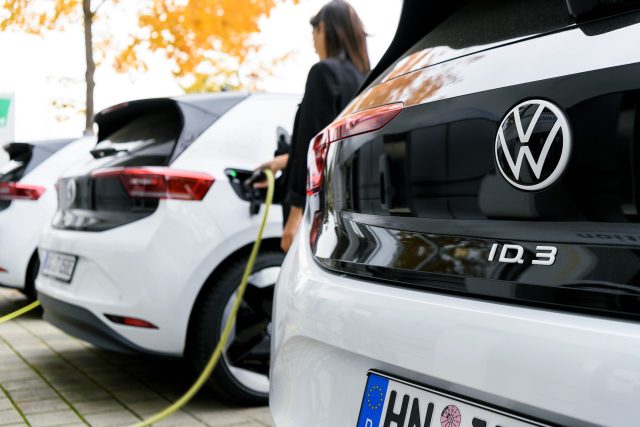
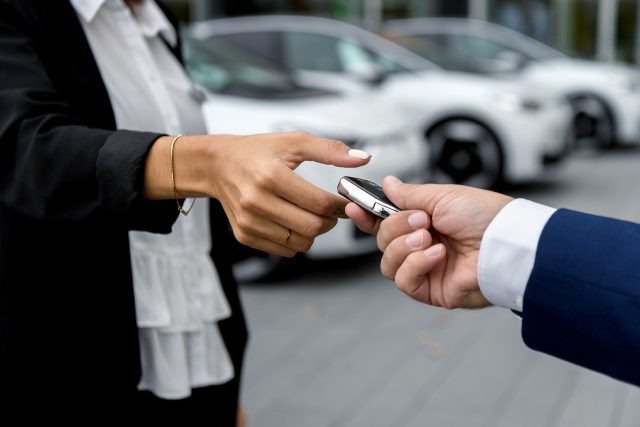
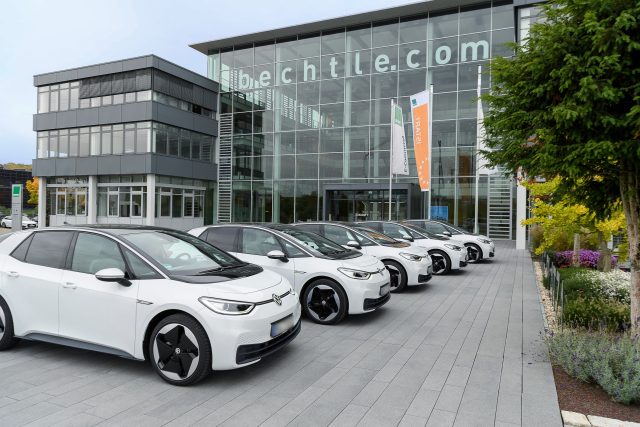
How exactly did you handle it: did you get help?
Uli Drautz: Naturally. This holds true for the infrastructure and for the choice of vehicle – all the parts have to fit together perfectly in this respect. To that effect, a critical aspect is the service the provider offers. The more I can get from one source, the better.
Trust in Volkswagen, in particular, seems to be high, otherwise you would not have ordered 50 ID.3 cars at once in the past year …
Uli Drautz: From our first endeavours with electric mobility back in 2014, we hoped that we would soon be able to take this step – towards all-electric mobility. Both the range and quite simply the availability played a role in this respect. Volkswagen made a flying start with the ID.3 and everything following on this platform. This refers to the volume and the delivery ability. The ID.3 is the vehicle that allows us to take another big step into the all-electric world.
Learn more in the following film:
How did distribution of the 50 vehicles work?
Uli Drautz: Normally we operate a user chooser fleet, in other words order new vehicles as needed. But this time we ordered first and then thrilled the drivers. Thanks to the support of Volkswagen, it was actually possible to provide all 50 ID.3 vehicles at the same location fully-charged at the same time. This was an impressive image that everyone quite rightly understood to mean: the all-electric age has dawned.
And you will continue down this path?
Uli Drautz: Without question. The interest of our employees will ensure this if nothing else. New orders for the ID.3 and ID.4 are remarkable, which doesn’t surprise me. We simply have a very strong pioneering spirit. Quite apart from that, electric mobility is simply fun!
Does that mean that the topic is spread via word of mouth?
Uli Drautz: Of course not. When the ID.3 vehicles were delivered, the 50 drivers set up a community to exchange experiences. Slowly and steadily more new ID.3 drivers are now coming on board to ask questions and allow themselves be won over.
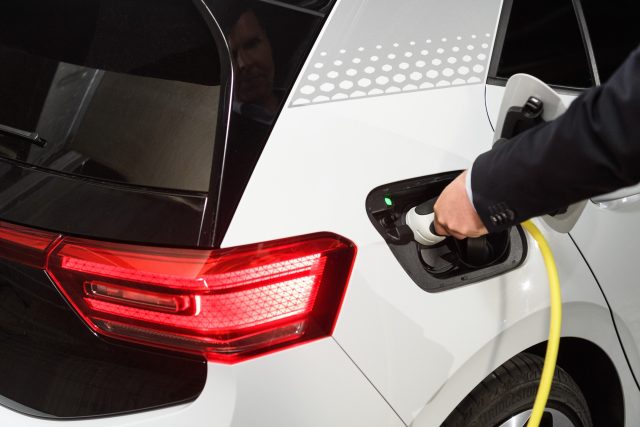
Can you actually cope structurally with this growing interest?
Uli Drautz: We are working on this continually. Charging for example has to be stress-free. That’s why we are extending our charging infrastructure vigorously. We have just under 400 charging points at our German sites at present, with 150 of these alone in Neckarsulm.
And the electricity comes from in-house production?
Uli Drautz: To a large extent, yes. Expansion is also in progress in this area. The maximum photovoltaic capacity is to be exploited at all of our sites in the framework of our sustainability strategy. Whenever possible, we likewise take the remainder of the energy we need from sustainable sources.
Does that pay off?
Uli Drautz: Completely. For three simple reasons: Firstly, this way everyone can be sure where the electricity comes from. Secondly, the energy we produce ourselves is much cheaper than what we buy. And thirdly, this gives the possibility to regulate the current ratings – intelligently automated of course. When the sun shines, charging is significantly faster than simply using purchased electricity.
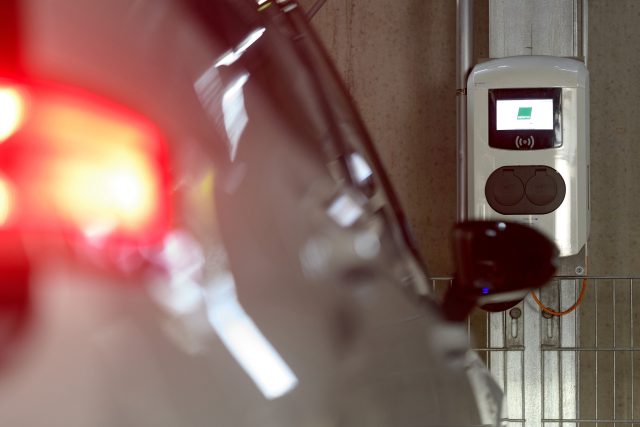
What role do state subsidies play in the expansion?
Uli Drautz: It goes without saying that there are many attractive options, all of which must first be explored. Advice is therefore needed in this respect. BAFA grants, tax breaks – it is fairly clear that the public authorities have grasped the urgency of switching. But even without these supports, there is an inevitability about the transformation – and money alone is not enough to solve the major challenges.
Which would those be?
Uli Drautz: The very first step is to decide on the right platform and the right network operator. The partners have to agree. Added to this, there are challenges to overcome within the company. The real estate and fleet departments generally work independently of one another, but here decisions have to be made together. The establishment of the infrastructure along with approvals, power lines and installation is a facility topic, while the operation in turn is handled by the fleet.
Who supported you in these processes?
Uli Drautz: A meeting with Volkswagen proved absolutely crucial. It was supposed to be just about the fleet expansion, but as is often the case, we also ended up discussing the infrastructure. The Volkswagen cooperation partner The Mobility House was recommended to us, which succeeded in winning us over completely with its energy and charging solutions.
When do you think the Bechtle fleet will be fully electric?
Uli Drautz: That is difficult to predict – and also not that critical for me. Quite simply, it is about starting now. There is a high level of urgency, this has been shown not least by the recent climate-related natural disasters in Germany. It’s high time.
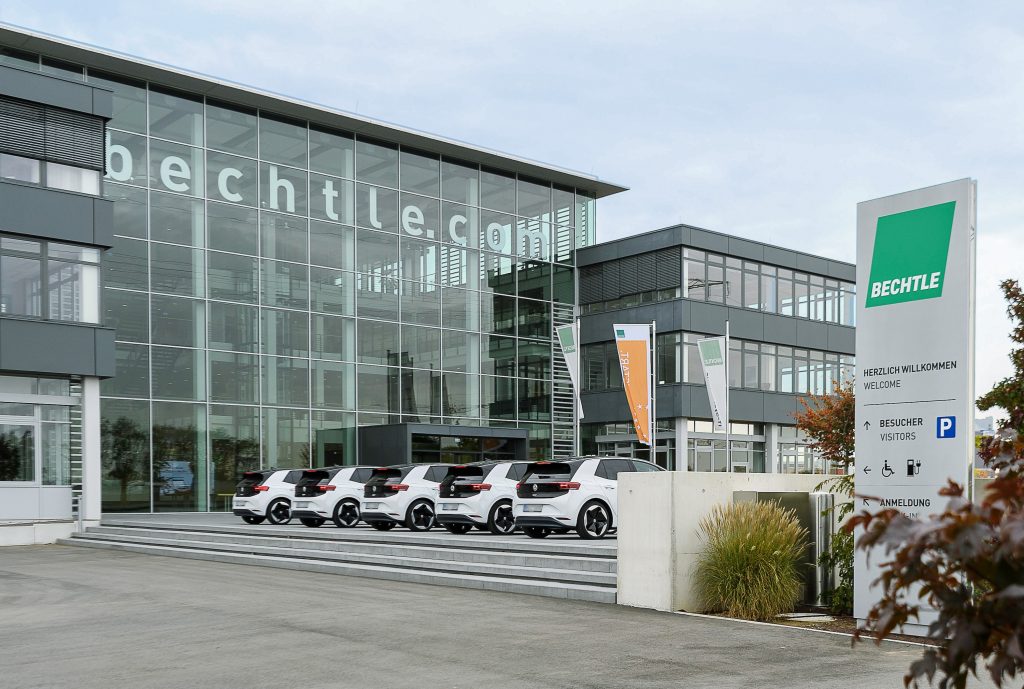
Three questions to Gottfried Pfeil, Bechtle AG
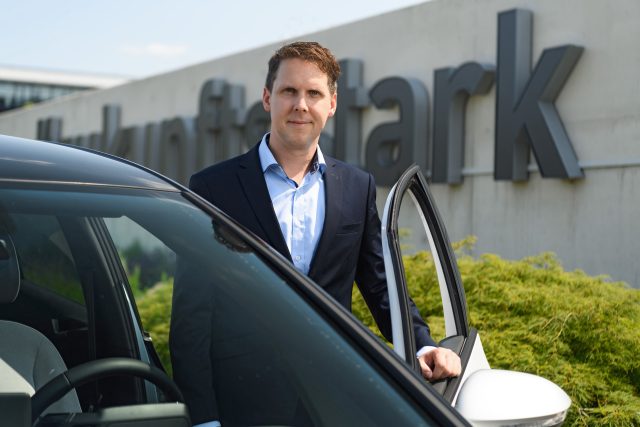
Mr Pfeil, what is your experience of the ID.3 to date?
Gottfried Pfeil: I always have a smile on my face when I step into the car and an even bigger one when I get out. The acceleration and driving dynamics are what impress me in particular. And I am not the only one: My three-year-old daughter always says before we set off: “Daddy, it’s time for takeoff!” (laughing)
What is your favourite feature of the car?
Gottfried Pfeil: I use the Travel Assist all the time. The system can take over the acceleration and lane keeping and controls the distance to the car in front. It’s just wonderful.
What do the colleagues who have not yet “electrified” say?
Gottfried Pfeil: Of course, there are doubts here and there. But anyone who comes for a drive tends to talk instead about the direct acceleration and the dynamic. The centre of gravity is very low. You are almost stuck to the road because the battery is located in the underbody. It’s like a go-kart for adults.
Three questions to Sabrina Frisch, Bechtle AG
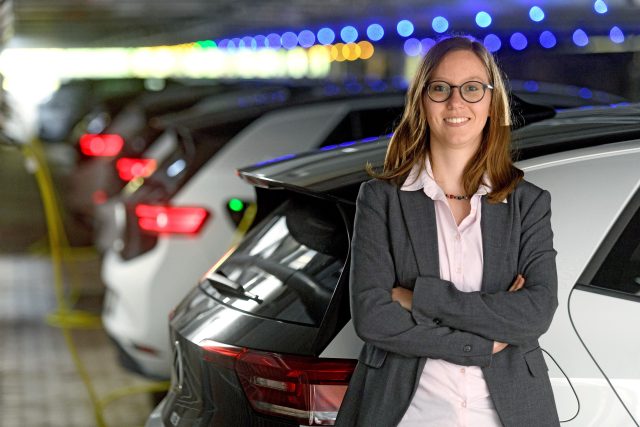
Ms Frisch, did you ever despair when trying to find a charging station?
Sabrina Frisch: No, I have never been in this situation so far. In my experience, it is always possible to find a charging point nearby. The network in Germany is already well developed, even along motorways – and there are always free stations.
How do you locate an electric filling station?
Sabrina Frisch: This can be done easily via various apps and We Connect via my smartphone or also using the voice control in the car. The next suitable charging point on the route is displayed immediately and the navigation guides you there directly as needed. If the charge level of the battery dips, the system even automatically suggests the nearest charging options.
Do you personally see a way back for the combustion engine car?
Sabrina Frisch: I just cannot see it. I have been driving the ID.3 since January – and am completely convinced. The acceleration, the driving experience and also the unbelievably low noise level are simply class. At the same time, I am pleased to contribute in my way to protecting the climate.
Status: 16.09.2021
© Volkswagen AG
The specified fuel consumption and emission data has been determined according to the measurement procedures prescribed by law. Since 1 September 2017, certain new vehicles are already being type-approved according to the Worldwide Harmonized Light Vehicles Test Procedure (WLTP), a more realistic test procedure for measuring fuel consumption and CO₂ emissions. Starting on 1 September 2018, the WLTP will gradually replace the New European Driving Cycle (NEDC). Because it involves more realistic testing conditions, the fuel consumption and CO₂ emission values calculated in accordance with the WLTP are in many cases higher than those calculated in accordance with the NEDC. As a result, there may be corresponding changes to vehicle taxation starting on 1 September 2018. Further information about the differences between WLTP and NEDC can be found at https://www.volkswagen.de/wltp. We are currently still required by law to state the NEDC figures. In the case of new vehicles, which have been type-approved according to the WLTP, the NEDC figures are derived from the WLTP data. Until it becomes compulsory, additional information about the WLTP values is provided on a voluntary basis. In cases where the NEDC figures are specified as value ranges, these do not refer to a particular individual vehicle and do not constitute part of the sales offering. They are intended solely for comparing different types of vehicles. Additional equipment and accessories (e.g. add-on parts, different tyre formats etc.) may change the relevant vehicle parameters, such as weight, rolling resistance and aerodynamics, and, in conjunction with weather and traffic conditions and individual driving style, may affect fuel consumption, electrical power consumption, CO₂ emissions and the performance figures for the vehicle. Further information on official fuel consumption figures and the official, specific CO₂ emissions of new passenger cars can be found in the “Guide on the fuel economy, CO₂ emissions and power consumption of new passenger car models”, which is available free of charge at all sales dealerships and from DAT Deutsche Automobil Treuhand GmbH, Hellmuth-Hirth-Str. 1, 73760 Ostfildern-Scharnhausen or at https://www.dat.de. Efficiency classes measure vehicles based on CO₂ emissions with due regard for the empty vehicle weight. Vehicles that correspond to the average are rated as D. Vehicles that exceed the current average are rated as A+, A, B or C. Vehicles that are below average are described as E, F or G. The information provided here relates in each case to the EC type approval of the selected model and its standard equipment in accordance with European Directive 2007/46/EC. Optional equipment selected by you at the configuration stage can mean that your configured model corresponds to a different approved type due to the selected equipment than would otherwise be the case without the selected optional equipment. This may result in deviations in the specifications for your configured model. The specified CO₂ values are values established during type approval of the vehicle.
